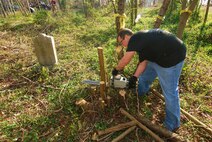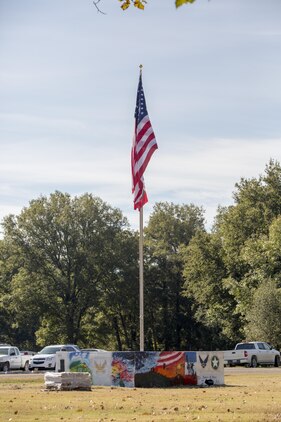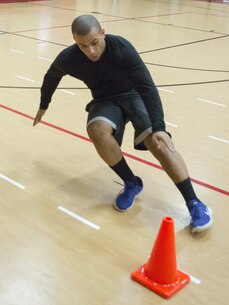Exactly What Kind Of Land Is Desirable Regarding The Different Trees
To start with, what good does tree pruning cutting and forming do for my trees? Second of all, why do it in the winter months? Cutting a tree or pruning is essential for many reasons. An important reason to prune a tree is to reduce the possibility of it falling throughout a wind or ice storm. Thinning a big tree canopy is a fantastic method to lower wind resistance.
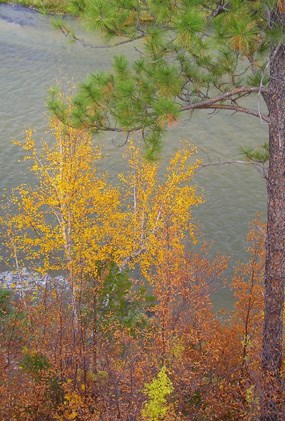
When pruned, air can now breeze with ease through the top of a tree requiring much less stabilization and pressure on the root system. Tree upkeep is likewise attracting the eye like yard cutting. Cutting dead limbs assists prevent the spread of disease or bacteria, and prevents possible dangers. There are lots of advantages to cutting, shaping, & pruning a tree.
It is More affordable! The majority of tree cutting service costs are low in the winter season considering that this is a slow duration. Regional tree service expense is very competitive during this season. It is cold exterior. Trees go to sleep (dormant) in the winter season just like our cherished Bear! Vascular cambium is slow; the tree depends on its reserves for nutrition, and does not utilize a great deal of energy. So why does this assistance for cutting a limb? Since sap circulation is not heavy and the tree will not bleed, for some types it's extremely crucial. Leaves are gone. Deciduous instead of Evergreen trees leaves have fallen, for that reason the debris is much less when cutting your trees. Clean-up and breaking the tree particles ends up being a lot easier.
So how do tree cutting & tree cutting services identify a dead branch versus a live branch without leaves? A skilled tree climber can discriminate. See a picture of a Red Maple (Acer rubrum) tree limb, one dead and one alive - tree service in the winter season. The dead limb is a bit discolored, cracked, and dried. The live limb has a much healthier more abundant color tone, together, and flexible. You can also see that the new growth is a lot more abundant than the dead limb.
The texture of the dead limb easy tree stump grinding is extremely rough while the texture of the live limb is smooth. If you try to break the dead limb, it's easy to snap apart. Whereas if you try to break the live limb, it's harder and will rip cut or tear by its live wet wood. Live limbs usually have dynamic terminal buds, and dead limbs terminal buds are dried up, dark or black brown, or completely non-existent depending upon how long the branch has been dead. Depending upon the tree types, dead limbs normally droop, and live limbs are normally more upright.
Normally, when a tree climber is up a tree it is simpler to determine dead limbs than from below. The sunlight helps from above likewise, from listed below there is typically a shadow under the branches making it hard to see subtle differences. The very best way to prune or cut a tree is naturally. This indicates that only diseased, dying, dead, split, rugged, or improperly balanced limbs are gotten rid of.
It is essential sometimes to remove live limbs, especially if a tree is possibly hazardous with a lean. If a large heavy limb is on the side of the lean and the tree has grown to a structure, then by removing this large limb (leader) you can reduce the opportunity of tree fall. A trees canopy and weight of big limbs has a lot to do with why a tree falls in a storm. Specifically a tree is not unhealthy or dead, although typically there is a mix of issues for a big tree to tumble over in a storm.
Tree cutting, cutting, pruning, & shaping are required jobs. As house owners, it is our obligation to preserve our trees and keep our next-door neighbors and lawns safe. Carrying out tree work of any kind in the winter season saves and is a smart move on the annual tree upkeep budget plan. So put on a warm coat, go out there because Cold weather, and get those trees pruned! Contact a regional business to offer your tree cutting service.
Trees Are Really Fantastic To Scatter Surrounding A Residency
Everyone wants to get the most for their loan. We normally believe that bigger is better and the more we're getting, the greater the worth for our dollar. This is typically the case however when it pertains to tree pruning, the reverse can be real. When trees are pruned the International Society of Arboriculture recommends restricting pruning to 25% during any pruning season. Pruning more than this can stress your tree and make it more vulnerable to insect or disease problems.
When foliage is pruned from a tree it gets rid of leaves that produce energy for extra leaf development, branch advancement and root growth. In reality, a technique utilized in the development of bonsai trees is to get rid of the new leaves from deciduous trees when they initially appear in the Spring. The tree needs to produce a 2nd set of leaves from its stored reserves of energy. When the brand-new leaves appear they are much smaller in size because the tree does not have adequate reserves. These little leaves are more in balance with the miniature trunks of the bonsai trees.
This strategy can likewise be applied to structural development of trees through pruning. When training young trees it is beneficial to develop a main leader and eliminate or decrease competing leaders for better structure. If the competing leader is pruned while the wanted leader is left alone, the competing leader will be deprived of the food it needs to keep up with the central leader.
The size of pruning cuts is another location where smaller is much better. When pruning a tree than a couple of large branches, it is more suitable to eliminate numerous smaller sized branches. Removing branches higher than four inches in diameter on a mature tree increases the quantity of time required to form tissue over the injury and increases the likelihood of decay.
Trees do not recover in the manner in which we do. Trees form a callus roll around the injury that closes over time. For big cuts this can take years and even years. While the wound is closing the tree is more susceptible to insect or disease issues. In addition, big cuts make the tree more likely to develop decay at the wound site. This decay develops a weak location in the branch or trunk that is more likely to break at that area. Large fully grown trees and soft wood trees are more susceptible to decay. Finally, multiple injuries in the very same area along a branch or trunk increase the probability of decay advancement and potential failure of the tree.
Trees take years to develop to maturity and become a big part of your house landscape. Providing your trees with appropriate care will help them preserve optimum health and structure. While pruning, it is essential to make the proper option, due to the fact that bad choices will damage or damage your trees.

To find out more on pruning check out our website at treeprosonoma.com or the site of the International Society of Arboriculture or the Tree Care Market Association. These companies can likewise provide you with contact http://treeislife.over-blog.com/about-us.html details for Licensed Arborists in your location that are trained in correct pruning techniques.
The Very Best Citrus Trees To Get Eating Are Straightforward
Bonsai Pruning is considered as one of the most essential techniques of bonsai training. It is very vital that you understand the subtleties of pruning so that you can create a bonsai with preferred shape. Bonsai pruning ensures that your reasonable tree service bonsai keeps looking beautiful and confirms to the kind you want it to have.
The foremost objective of pruning is to give a correct type to your bonsai. Towards this end you should eliminate the branches which do not align to your design. It is during the growing season that you have to carry out significant pruning activities. Typically pruning needs to be carried during the late spring season. Having the right set of tools to carry out pruning activities is essential. Utilizing poor quality inexpensive tools will cause irreversible damage to your bonsai trees, so it is better to opt for the very best tools that you can manage.

Significant pruning activities put a lot of stress on the plants; for this reason you must take proper post pruning care of your bonsai plant. Utilize an excellent quality paint to cover the wounds on the wood, this will aid in quicker healing process.
Once the trees basic form has actually been established by performing major pruning activities, it is vital to keep this kind by performing routine plucking and pinching. You don't need to wait for any specific season to bring this kind of activity.
There are other strategies like Jinn, Shari and Uro, which can be utilized to recreate the feel of trees growing in nature. These techniques will also help you to make your trees look older, although it needs a lot of skill and experience to do this without harming your bonsai trees.
Bonsai pruning can do a great deal of damage to the plant if not performed properly, for this reason it is much better to consult a professional if you are doing it for the very first time.
The Very Best Citrus Trees Concerning Eating Are Simple
In spite of fantastic variation in information, two broad patterns of development can be differentiated. Numerous trees, specifically large forest trees, have a main leader that is strongly dominant. This dominance might persist throughout the life of the tree, but in maturity and old age some trees establish a spreading crown. Such trees can be grown as feathered trees, with branches practically to the ground, or as requirements on a clear stem. A number of other trees have a pattern of branching in which there is no dominant leader and they form bushy headed standards.
When the natural development of trees is respected, pruning and training is relatively basic. In the first five to Ten Years the focus is on developing a strong, durable, and balanced framework. This might include bit more than a preliminary brief period of staking, the elimination of badly put shoots and, in the case of some trees the upkeep of a strong leader. As the well formed tree establishes, there is less and less require for regular pruning, however broken, dead or unhealthy wood has to be removed.
Sadly, lots of trees are planted where there is insufficient area to permit them to reach their ultimate size, or modifications in land use make it essential to prune or get rid of established trees. The radical pruning that is regularly utilized in such circumstances is often grotesquely mutilating.

It should be worried that some pruning and all felling are significant operations that should not be performed by the amateur. A lot of work that needs the pruner to work above ground level and all felling and work in which a chainsaw is to be used need to be carried out by professional tree surgeons for security reasons. Sadly there are many people laying claim to abilities they do not have and who may well leave a tree in an even worse state than they discovered it. Pick from contracters best local tree pruning authorized by a national arboricultural association or comparable body if you are employing someone to do work on trees.

It really Does Not Likely Cost A Ton Of Money To Get A Citrus Tree
Shaping and dwarfing are achieved through a few fundamental but exact methods. The small size of the tree and the dwarfing of foliage are kept through a consistent regimen of pruning of both the leaves and the roots. Numerous techniques should be used, as each types of tree shows various budding behavior. In addition, some pruning must be done seasonally, as the majority of trees need an inactivity duration and do not grow roots or leaves at that time; improper pruning can deteriorate or eliminate the tree.
A lot of species appropriate for bonsai can be shaped by electrical wiring. Copper or aluminum wire is twisted around branches and trunks, holding the branch in location till it ultimately lignifies and maintains the wanted shape (at which point the wire must be removed). Some species do not lignify strongly, or are currently too stiff/brittle to be shaped and are not favorable to wiring, in which case shaping must be accomplished primarily through pruning.
To imitate age and maturity in a bonsai, deadwood features called "jin" and "shari" can be used to excellent result with coniferous bonsai, specifically: "jin" is created by getting rid of the bark from a whole branch to create a snag of nonessential, while "shari" includes stripping bark from areas of the trunk, imitating natural scarring by limbs being torn totally free. Care should be taken when employing these methods, due to the fact that these areas are prone to infection, and elimination of too much bark will result in losing all growth above that area. Likewise bark must never be gotten rid of in a total ring around the trunk as it includes the phloem and will cut off all nutrient circulation above that ring.
Because of limited area in the confines of a bonsai pot, bonsai care can be quite hard. The shallow containers limit the stretch of the root system and make correct watering almost an art in itself. While some types can manage periods of relative dryness, others need near-constant moisture. Watering too regularly or allowing the soil to remain soaked can promote fungal infections and "root rot". Sun, heat and wind direct exposure can rapidly dry a bonsai tree to the point of dry spell, so the soil wetness must be kept an eye on everyday and water offered copiously when needed. The soil must not be permitted to become "bone dry" even for quick durations. The foliage of some plants cultivated for bonsai, including the typical Juniper, do not show indications of drying and damage up until long after the damage is done, and may even appear healthy and green regardless of having a totally dead root system.
Bonsai ought to not be allowed to end up being waterlogged, as this might lead to root rot. Neither needs to the soil be allowed to dry too totally prior to rehydration. Watering methods vary, with some growers preferring to water with a fine rose on a watering can or hose pipe, while others immerse their trees in a water-filled basin to the height of the container lip.
Bonsai are normally repotted and root-pored around springtime just before they break inactivity. Bonsai are typically repotted every 2 years while in development, and less typically as they become more fully grown. This prevents them from becoming pot-bound and motivates the development of brand-new feeder roots, permitting the tree to take in wetness more effectively.
Bonsai electrical wiring is one of the most effective tools to manage the shape of the tree. The very best time to wire a tree is in spring or fall when there is not as much foliage and the tree will not be too stiff. Since the sap pressure of the trunk and branches is much lower.), (Trees end up being stiff in winter season while inactive.
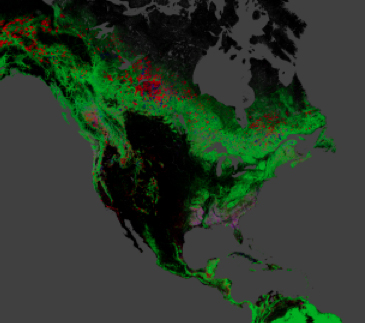
To wire the tree, wrap the trunk. Then wrap each branch in spirals of bonsai wire so that the branch might be bent. The tree will then train the branch to grow in the desired instructions. Another technique of circuitry includes connecting weights to the branches, causing them to sag and producing the impression of age.
Normally, wire is left on for one growing season. The tree needs to not be allowed to grow out of the wire, because this might cause the bark to become bound to the wire, making elimination traumatic. When the time concerns eliminate the wire, it needs to be cut away in little pieces (instead of winding it off) as this will cause less damage tree service near home to the foliage.
The density of the wire used should remain in proportion to the size of the branch bigger branches will require lower gauge wire. Two pieces of thinner wire matched together can be utilized in lieu of much heavier wire. It is bad kind to let any wires cross; this is most easily accomplished by beginning with the base of trunk and developing.
When flexing the branches, one ought to listen and feel for any indication of splitting. When flexing a branch near the trunk additional caution ought to be utilized, as the branch is usually most breakable near the trunk. It is possible to slowly bend a branch little by little throughout numerous months.
Special tools are offered for the upkeep of bonsai. The most common tool is the concave cutter, a tool created to prune flush, without leaving a stub. Other tools consist of branch bending jacks, wire pliers and shears of different percentages for performing information and rough shaping. Anodized aluminum or copper wire is utilized to form branches and hold them until they take a set.
Viewpoints about soil blends and fertilization differ commonly among professionals. Some promote using natural fertilizers to augment a basically inorganic soil mix, while others will utilize chemical fertilizers easily. Bonsai soils are built to optimize drain [3] Bonsai soil is mainly a loose, fast-draining mix of components, frequently a base mixture of coarse sand or gravel, fired clay pellets or broadened shale integrated with an organic part such as peat or bark. In Japan, volcanic soils based upon clay (akadama, or "red ball" soil, and kanuma, a type of yellow pumice) are preferred.
Every bonsai pot is geared up with drain holes to make it possible for the excess water to drain pipes out. Each hole is typically covered with a plastic screen or mesh to prevent soil from leaving. Containers can be found in a variety of colors and shapes (glazed or unglazed). The ones with sharp corners and straight sides are normally better fit to formally presented plants, while oval or round containers might be utilized for plants with informal shapes. The majority of evergreen bonsai are positioned in unglazed pots while deciduous trees are planted in glazed pots. It is important that the color of the pot compliments the tree. Bonsai pots are produced all over the world, some are greater quality than others and some are extremely collectable such as ancient Chinese or Japanese pots made in highly promoted areas with knowledgeable pot makers such as Tokoname, Japan. However, highly collectable pots are not just confined to Asia, European Artists such as Byran Albright and Gordon Duffett produce distinct pots which Bonsai artists collect.
Pre-Bonsai materials are frequently placed in "growing boxes" which are made from scraps of fence board or wood slats. These big boxes permit the roots to grow more easily and increase the vigor of the tree. The second stage after utilizing a grow box is to plant the tree in a "training box" this is frequently smaller sized and helps to develop a smaller sized thick root mass which can be more easily moved into a final presentation pot.
Plucking Produce From Your Trees Is Just Not That Difficult
There is absolutely nothing like having your own lemon tree in the yard especially as single lemons are ridiculously costly. It is also fantastic if you have a lemon tree in your area where the owners are happy for you to select their lemons or perhaps better still, select them for you and pop them in basket on the veranda with please help yourself sign. Citrus is in the Rutaceae and is abundant in vitamin C. There are Citrus x limon 'Eureka', 'Lisbon' and 'Meyer', C. sinensis (orange), C. x paradisis (grapefruit) and C. japonica (kumquat). They are an evergreen tree and love a warm well drained pipes sunny position. They do not like damp, clay soils or frosts. They are exactly what we call starving and need big amount of fertiliser particularly nitrogen, used four times a year. Their attraction is their shiny green leaves and white flowers that are greatly perfumed. The other advantage about them are they flower in late autumn/winter and produce fruit in late winter/early spring when great deals of individuals have colds.
They are a great tree, but they do have some severe insect problems. One such bug that has become a serious http://treeislife.over-blog.com/about-us.html bug in Melbourne is the dreaded Gall Wasp. It is a native parasite whose environment is around the border of NSW and Queensland. Unfortunately, it has taken a preference to citrus specifically lemons and has moved south. The rotten little pest burrows into the stems, causing them to swell which distorts the branches and triggers them to die back. Regrettably, there are no chemical controls and you can not entirely eliminate it. To manage this parasite, you need to utilize an Integrated Insect Management System (IPM). This is a system that takes the reliance away from chemicals and motivates gardeners to utilize physical and biological controls. For example, utilizing ladybirds to eat aphids and hang sticky traps in lemon trees to catch the gall wasp.
To manage it utilizing the IPM system gardeners need to understand its life-cycle and interrupt it to reduce the varieties of woman. Around August/September, the tiny little female wasp lays her eggs on the branches of the tree and the larvae burrow into the stems which causes them to swell. In November/December they burrow out, leaving holes in the gall and fly off.
When you first notice the swells in August/September, the first technique is to prune them. If the infection is bad, this can be a considerably reduce the tree's height. Because they keep being assaulted by the wasp and then pruned, with young trees it significantly sets them back. They never get a possibility to grow. The other downside is if the tree is very large, then it is impossible to prune them all out. There is no point pruning off the galls in November/December, since they have actually bored out and left.
The other technique is again in August/September to hang sticky traps in the tree and catch the women. Sadly, these traps capture all the bugs, whether bad or great and you need to replace them routinely due to the fact that they end up being full. You may need to hang 3 or four. Likewise, again in November/December, you need to hang fresh traps routinely to capture the emerging pests.
My Ideal Tree Was A Fruit Tree
White Dogwood trees are amongst the most beloved deciduous, flowering trees in the country, and for great factors. Kept in mind for their long, distinctive bracts and graceful branches, White Dogwoods are usually planted as specimen or accent trees because of their stunning ornamental worth that lasts through all 4 seasons. The U.S. Department of Farming groups White Dogwoods, or Cornus Florida, in plant strength zones 4 through 9, which extends throughout the Eastern parts of the United States.
In these locations, environment and ecological conditions change. This suggests without appropriate care, White Dogwoods can easily catch tension under these outside conditions, which can make them more vulnerable to damage, disease, and pest invasions. Continue reading to learn how to identify if it's alive or dead if you have a White Dogwood tree on your residential or commercial property that appears unhealthy.
It is essential to inspect your trees regularly for any signs of tension. Catching an issue early on can conserve your trees, however likewise save you from a big inconvenience. Disregarding to resolve tree problems will not just endanger security, it can cause expensive repair work in the event that a tree falls on an automobile or house. In regards to Dogwoods, they are delicate trees that require special attention under particular scenarios. For circumstances, mowing and weed-whacking should be done very thoroughly near Dogwood trees due to the fact that they have shallow root systems.
When it concerns fertilization, they will respond poorly to the slightest mistake. Too much fertilizer will trigger just as much stress as insufficient. Poor sunlight and inadequate soil conditions will put them under stress too, causing them to lose health and vigor. Typical signs of stress consist of leaf loss, crown dieback, stunted development, poor foliage color, and more. Overtime a Dogwood displaying these signs of tension will ultimately pass away.
To see if a White Dogwood tree is alive or not, you can administer an easy Do It Yourself test. The only tool you will require is a little pocket-style knife. To conserve time, remember that a Dogwood tree that does not grow leaves during the entire growing season is dead. So if you saw that your White Dogwood has actually not bloomed at all and the peak growth season for trees is over, it is most likely dead. If this is not the case for your White Dogwood, move on with the test to identify if it lives or not.
Examine the bark of the tree, concentrating on the base of the trunk and the base of the bigger branches. If the bark is peeling, it might tree removal near show that the tree is unhealthy or dying. If the bark has actually peeled away, or flakes off easily at the thickest part of the branch, the branch is dead, however perhaps not the whole tree. If there is a ring of missing out on bark around the base of the trunk, the entire tree is most likely dead.
Use your pocket knife to scrape off 1 inch of bark from the base of the tree's trunk. The tree is alive if the bark is firm and the flesh is damp. If it is dry and breakable, the tree is dead.
Get a small twig at its idea and push your fingernail into the flesh. If you can permeate the branch's damp tissue, it lives. Bend it in half to see if the branch is versatile and the flesh is green. This is another sign of life. If the twig snaps quickly and is dry on the within, it is dead.
_(4607113843).jpg/320px-08APR10_Loop_(3)_(4607113843).jpg)
Contact a regional and trusted tree care business for professional support if you are unpleasant or not able to perform this test. They have the proper tools, training, and resources to precisely inspect all types of North American trees, in addition to, diagnose, treat, and remove them when required.
A dead Dogwood ought to be gotten rid of as early as possible to prevent harmful accidents and insect issues. Get a free estimate from your tree care professional to assess the rate for tree removal service. Simply always remember, routine tree care is the only and very first action for healthy, happy trees that stand the test of time!

